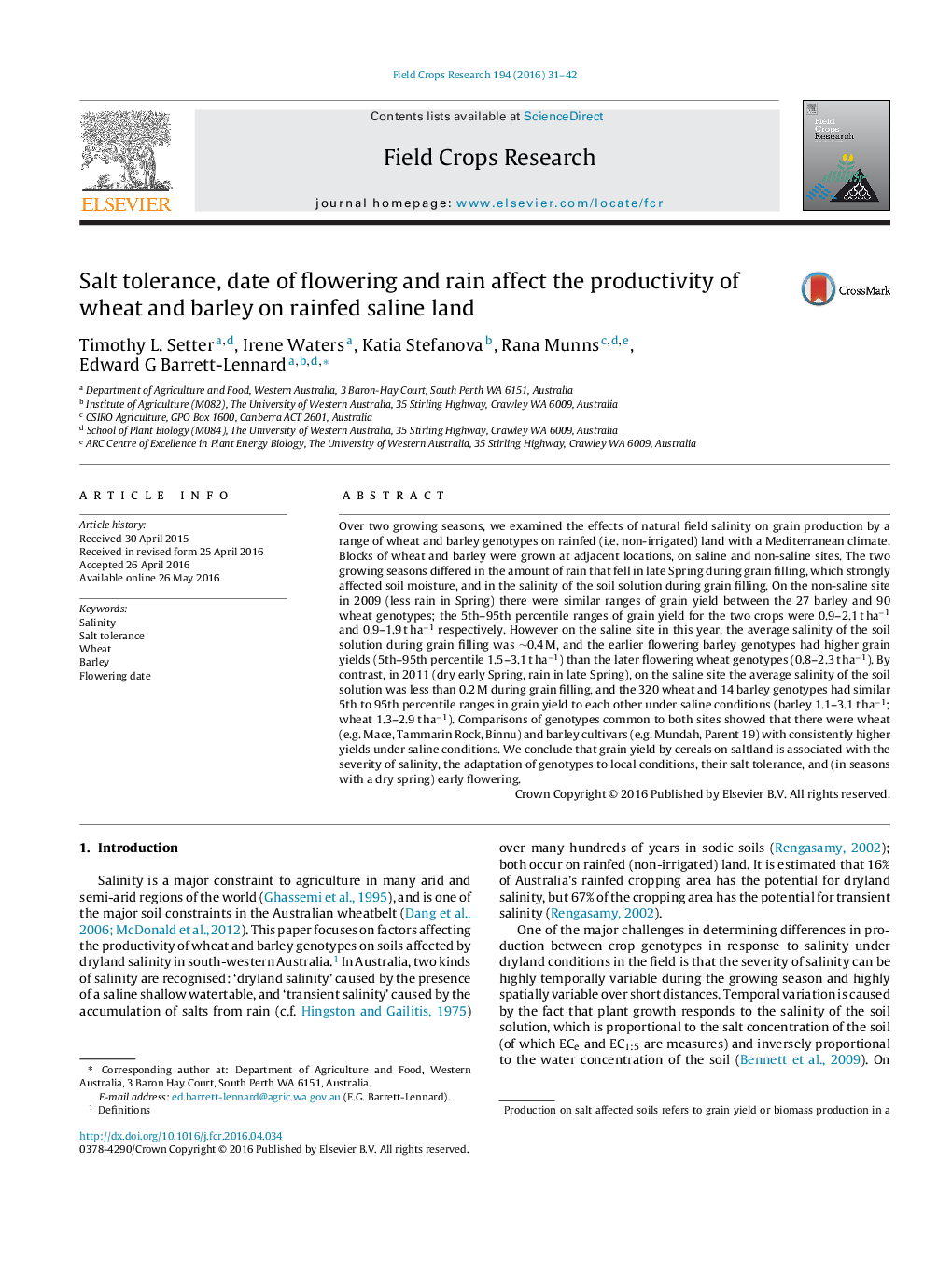| کد مقاله | کد نشریه | سال انتشار | مقاله انگلیسی | نسخه تمام متن |
|---|---|---|---|---|
| 4509829 | 1624669 | 2016 | 12 صفحه PDF | دانلود رایگان |
• Barley is considered more salt tolerant than wheat but there are few supporting data.
• We examined the salt tolerance of wheat and barley genotypes under field conditions.
• Trials were conducted in two seasons under dryland (non-irrigated) conditions.
• High grain yield occurred through adaptation to local conditions and salttolerance.
• In a dry year higher yields in barleys were associated with more rapidflowering.
Over two growing seasons, we examined the effects of natural field salinity on grain production by a range of wheat and barley genotypes on rainfed (i.e. non-irrigated) land with a Mediterranean climate. Blocks of wheat and barley were grown at adjacent locations, on saline and non-saline sites. The two growing seasons differed in the amount of rain that fell in late Spring during grain filling, which strongly affected soil moisture, and in the salinity of the soil solution during grain filling. On the non-saline site in 2009 (less rain in Spring) there were similar ranges of grain yield between the 27 barley and 90 wheat genotypes; the 5th–95th percentile ranges of grain yield for the two crops were 0.9–2.1 t ha−1 and 0.9–1.9 t ha−1 respectively. However on the saline site in this year, the average salinity of the soil solution during grain filling was ∼0.4 M, and the earlier flowering barley genotypes had higher grain yields (5th–95th percentile 1.5–3.1 t ha−1) than the later flowering wheat genotypes (0.8–2.3 t ha−1). By contrast, in 2011 (dry early Spring, rain in late Spring), on the saline site the average salinity of the soil solution was less than 0.2 M during grain filling, and the 320 wheat and 14 barley genotypes had similar 5th to 95th percentile ranges in grain yield to each other under saline conditions (barley 1.1–3.1 t ha−1; wheat 1.3–2.9 t ha−1). Comparisons of genotypes common to both sites showed that there were wheat (e.g. Mace, Tammarin Rock, Binnu) and barley cultivars (e.g. Mundah, Parent 19) with consistently higher yields under saline conditions. We conclude that grain yield by cereals on saltland is associated with the severity of salinity, the adaptation of genotypes to local conditions, their salt tolerance, and (in seasons with a dry spring) early flowering.
Journal: Field Crops Research - Volume 194, 1 August 2016, Pages 31–42
